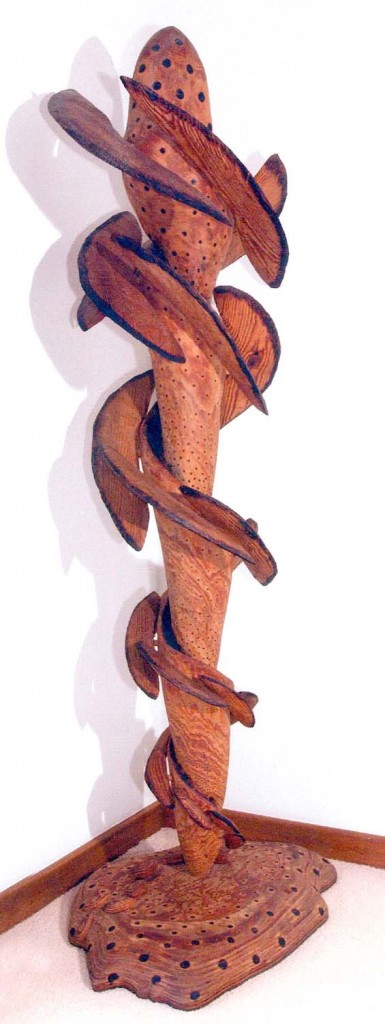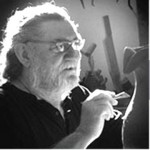
James Surls
American, 1943-
Calling Home, 1981
carved and burned wood
SBMA, Gift of Barry Berkus

Undated photograph of the artist
“I was born in Terrell, Texas, on April 4, 1943, the second son of loving parents who gave me freedom, independence and the love of mental exploration. My mother gave me a poetic vision. My father taught me how to make it in a hard ass world. High school was football and fish fries and most likely to succeed. College was down home and country at Sam Houston State College in Huntsville, Texas. There I was, me and Dan Rather and a bunch of other red necks trying to move up in the home grown world of East Texas. Next stop: an MFA from Cranbrook Academy of Art in Bloomfield Hills, Michigan. What a change from the pine woods of East Texas to the formal world of the Royal Academy. Now my world begins: the Guggenheim Museum, the Museum of Modern Art, the Whitney, the Stedelijk Museum in Amsterdam and some thirty more museum up to now. Now is always the best. Out front of the Bass Museum of Art in Miami Beach, Florida, with my best shot straight from the Festival International de Sculpture of Monte Carlo. The piece, Standing Flower, Diamond, Knife, and Me (to the left) made in the year 2000, is a self portrait with a diamond clean, clear and intellectual. A knife, symbolic of the man world, is stuck straight through the cool and calculated diamond, all backed by the flower, full, voluptuous and female. My art is symbolic. If the spectator asks: What is it? What does it say? What does it mean? What does it represent? Then listen, the art will answer.” -James Surls
COMMENTS
In Calling Home, Surls abstracts a tree trurnk into a spiraling, imposng form that suggests a swirling dynamism. Calling Home revitalizes the tradition of direct carving in the United State, using this immediate, hands-on approach to address a contemporary interest in subjective narrative. Originally associated with African and Oceanic sculpture and then embraced by European avant-garde artsts, such as Constantin Brancusi and Amedeo Modigliani, direct carving offered a modernist approach to sculpture making. During and after World War I, direct carving came into vogue in the United States. The medium appealed to such artists as Robert Laurent, John Flanagan and William Zorach because it enabled a greater exploration of texture and form, and brought art closer to personal experience.
- SBMA Signage for Calling Home, n.d.
